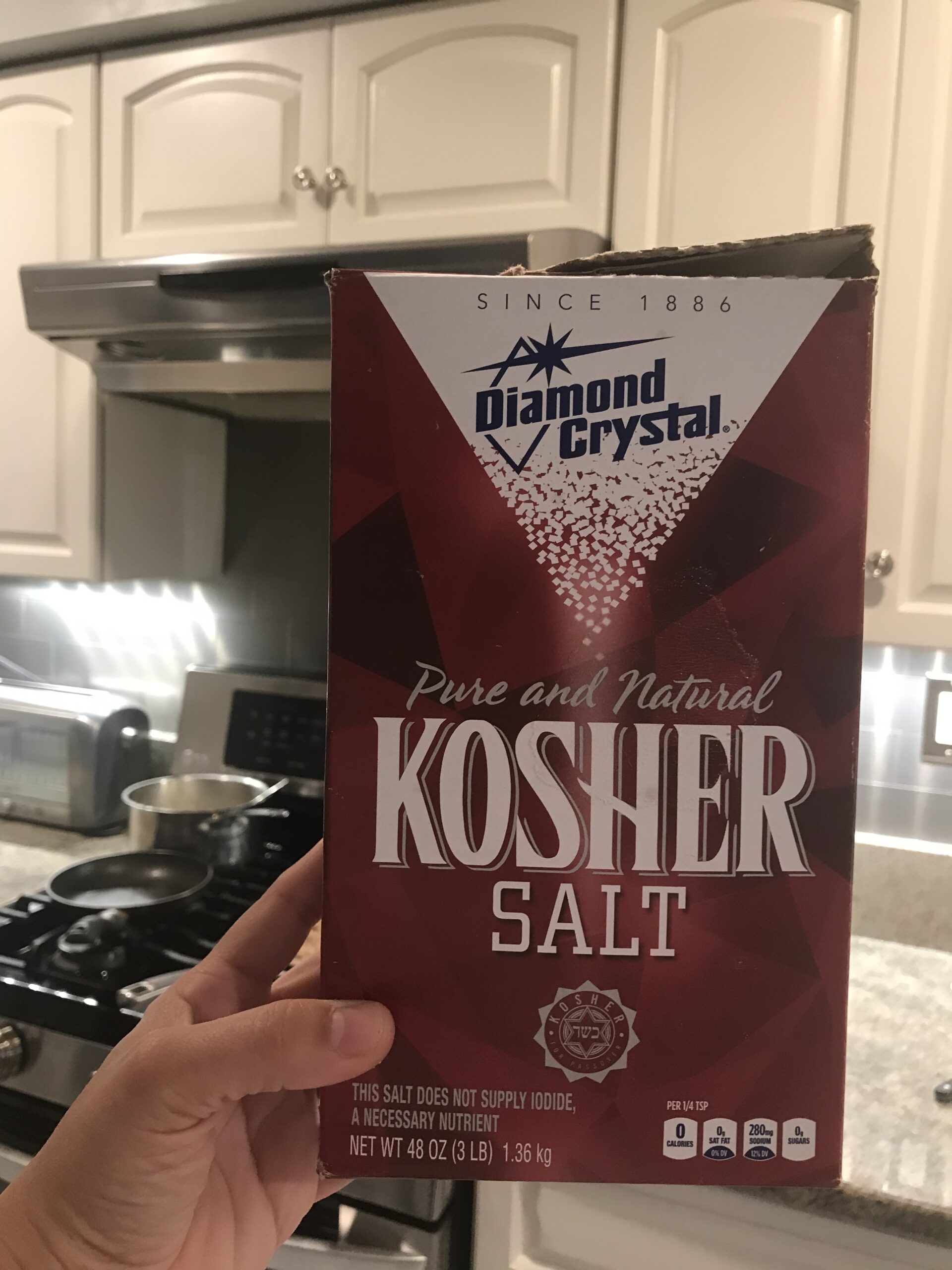
What
Table salt – Most commonly used. Has dense cubes and doesn’t adhere well to food. Some have iodine added and can taste a bit metallic
Kosher Salt – Traditionally used in the Jewish “Koshering process” to draw blood out from the meat of the animal. Lighter and airy, contains no additives.
Himalayan Pink Salt – From Pakistan, similar to table salt, but the impurities actually make the hue pink. Much more expensive due to it being touted as healthier.
Sea salt – It is collected through the evaporation of natural salt water. Dissolves quickly. Contains trace minerals.
Maldon – Sea salt flakes from Maldon England. Less refined. Considered a finishing salt but some cook with it. Considered less bitter. Aesthetically pleasing and the crunch is appealing.
Types of salt matter
Personally, I’ve used Diamond Kosher salt throughout my culinary career and this is the only salt I recommend. They have this patented pan evaporation process called the Alberger method. This causes the flakes to adhere better to food, be lighter and less dense than the Morton brand. It also has less sodium by volume compared to regular table salt.
With that in mind, I agree with what Samin Nosrat says in her book: whatever salt you choose to use, make sure you understand it. Continue to taste and test and you will be able to season appropriately with it, provided you stick to the same one.
When
Here’s a simple way to think of this. Salt needs to travel through to get to the inside and throughout whatever you are seasoning. The thicker or denser your food is, the earlier you can season it. You can season most of your beef and poultry a day ahead of cooking, (as long as it’s not thin) but something like Thanksgiving turkey can stand up to 2 days ahead. Fish can be affected negatively (firm up, and be tough) if you season it too soon, so right before cooking is fine. Other things also can be seasoned right before cooking as well.
How
How you salt is really important. Many people don’t salt properly which results in an under seasoned dish. I understand there may be a concern for some with excess sodium, but the reality is that when you are cooking at home; you will be consuming far less sodium that way. If the rest of your diet is processed, packaged food or eating out regularly – that might be the culprit, not how you season your food!
Grab the salt with your fingertips, including your thumb and run your fingers back and forth while maintaining your wrist high enough above the food to be able to see it fall evenly. This allows for even distribution and even seasoning which will ensure your food tastes amazing.
Practice
As with anything, the more you practice this – you will start to become attuned to that particular moment when the salt has helped your food “crossover” from bland to flavorful.The only way you’ll get better is to practice and keep tasting along the way.
Challenge yourself! For one meal that you make this month, be intentional with your seasoning. Practice seasoning ahead if necessary, and create an even coverage as described above. Assess the taste; and if it was to your liking – try to remember how the salt felt in your hand.
This is SO helpful, thank you!!
I’m so glad. Thank you for the request!